- Home
- Shore Fishing
Shore Fishing
Tips, Tackle and Techniques
Most saltwater fishermen seem to end up specialising in either shore
fishing or boat fishing - just one of them, seldom both.
Perhaps the sheer volume of tackle required to do both effectively - and its cost - is the limiting factor.
But it does make sense for even the most committed boat angler to have some shore angling gear for those days when it's just too rough to get out in a boat.
And it's not just boat anglers that need to have a good working knowledge of tides; shore anglers do too.
Why? Well, for two good reasons:~
- Fish organise their lives - and their feeding habits - around them, and
- In some locations the tidal range - particularly at spring tides - can make shore marks unfishable at certain stages of the tide.
So it would be as well to know about this before you head off for the shoreline, especially if any bait-digging is involved.
But it's pretty broad term, shore angling, including as it does:~
- Beach Fishing
- Pier Fishing
- Rock Fishing
- Estuary Fishing
We'll get back to these shore fishing venues later - along with the primary shore fishing techniques of:~
First though, let's take a look at the tackle and equipment you'll need to cover these aspects of shore fishing ...
Shore Fishing Tackle
Clearly, the sheer variety of fish species, techniques and shore fishing venues rules out any chance of a single rod and reel outfit satisfying all your expectations.
Shore Fishing Rods
Take shore fishing rods for instance. You'll need a specialist surf casting rod if you're to stand any chance of getting your bait out past the breakers on a gently sloping beach.
And spinning for bass? There's a huge choice of spinning rods available for casting a lure to this, the most popular by far of our inshore fish.
But before you rush out and buy a casting rod of any kind, you'll need to decide on what type of reel you intend to use with it. Why? Well, if it's a baitcast reel (a small multiplier) you'll need a rod specifically designed for it. As this type of reel is used on top of the rod, then the line guides will be small and closely spaced to keep the line clear of the blank when the rod takes up its maximum power curve.
If a spinning (or fixed spool) reel is your preference, which is fixed below the rod, then there'll be fewer guides and those closest to the reel will be of a larger diameter to accommodate the coils of line that come off the fixed spool during casting.
Shore rods are marked with their casting rating, either in ounces or grammes, and this relates to the range of lure weights or leads they're intended to be used with. As a rule of thumb:~
- Saltwater spinning rods, plugging and float fishing rods will be in the range of 1oz to 3oz
- Bass fishing rods for surf and estuary work are in the range 2oz to 4oz
- General surf fishing rods are in the range 4oz to 6oz
- A rod designed for rough ground (where you'll have to bully the fish from its habitat) and a heavy surf rod will be in the range 6oz to 8oz.
- Multi-section travel rods are in the range 4oz to 6oz
- Telescopic (or collapsible) fishing rods are usually in the range of 1oz to 3oz
Shore Fishing Reels
Here you have a choice:~
- Multipliers (or Baitcaster Reels as they're known in the United States), or
- Fixed Spool Reels (or Spinning Reels), and
- Drum Reels - Just the one as far as I'm aware, the Australian Alvey Reel which can be rotated through 90degrees and used for casting much like a fixed spool reel.
In the end it will probably come down to personal choice, but let's take a look at the main strengths and weaknesses of each type:~
Multipliers:~
- Small diameter spool revolves very rapidly during the cast, leading in inexperienced hands to spectacular over-runs and tangles.
- Once mastered, exceptionally long casts can be made.
- The retrieve rate is initially slow, but increases gradually as line builds up on the spool, increasing its effective diameter as it does.
- Not suitable for very low diameter braided lines.
Fixed Spool Reels:~
- No revolving spool, so overruns and tangles don't happen
- Large diameter spool gives high retrieve rate - a very useful attribute when fishing over broken ground.
- Spools can be changed quickly, often by the push of a button.
- More cumbersome than a multiplier
Drum Reels:~
- No revolving spool in casting mode, so overruns and tangles don't happen
- Large diameter spool gives high retrieve rate - a very useful attribute when fishing over broken ground.
- Simple, robust and easy to use.
- Considered a bit quirky in modern circles - but so what?
For general shore fishing, 15lb breaking strain monofilament (0.35mm
diameter) will be about right, so when choosing a reel for this purpose,
look for a model that holds 250m to 300m of 12lb to 20lb line. For
rough ground fishing you'll need a reel of capacity for at least 200m of
25lb to 30lb line (0.45mm diameter).
Fishing Line
You've got just two types of main reel lines to choose from:~
- Nylon Monofilament Line
- Braided Line
Monofilament Lines for Shore Fishing ~ These are made from liquid nylon, by drawing it out in a single continuous strand until it has reached a predetermined thickness. Small diameter mono lines are made by continuing the drawing-out process until the desired thickness has been reached. Breaking strain is obviously related to diameter, so it will come as no surprise that thinner lines are less strong than thick ones.
Modern production processes ensure that today's mono lines are highly consistent in terms diameter and breaking strain when new, but this happy state of affairs soon changes after the line has been in use for a while. Exposure to the sun causes a structural change in the line - ultra-violet degradation - to occur, and this together with the inevitable nicks and abrasions soon mean that the actual breaking strain of your mono line is only a fraction of what it said on the spool. Fortunately, mono line is relatively cheap - and it's a wise angler that replaces it regularly.
Braid lines for Shore Fishing ~ The acclaimed features of braided line - narrow diameter and high strength - bring both benefits and disadvantages for shore fishing. For example:~
- Unlike mono, braid is almost non-stretch. So, it will give better bite detection at the rod tip and instant hook penetration on the strike.
- Similarly, you'll be kept in direct contact with a fish hitting your lure when spinning and plugging.
- Braid line has much higher abrasion resistance than mono - it will last much longer.
- But when surf fishing in heavy conditions the non-stretch will work against you, breaking out the lead when a mono line wouldn't.
- Braid lines don't cast well on a multiplier reel, as the coils bed into one another on the spool when under tension on the retrieve. Next cast? A short, inaccurate one if you're lucky, and a bird's nest if you're not! So for casting with braid, a fixed spool reel beats a multiplier every time.
And just one more knot to learn - the rather unimaginatively named braid knot.
Shock Leaders
When casting from a crowded beach, the last thing you need is a crack-off. You must use a shock leader to prevent this happening.
As a rule of thumb, the breaking strain of the shock leader should be ten times the weight of the lead (in ounces) in pounds, if you see what I mean. That is, for a 4oz weight use a 40lb shock leader, for a 6oz weight use a 60lb shock leader and so on.
Not only should the shock leader be of adequate strength, it should also be low stretch - which sounds strange for something intended to absorb shock. The reason is because the dynamics of long casting requires that all of your energy is transferred into compressing the rod.
If the line is capable of stealing some of this energy by stretching, then your rod will get less of it and your casts will be shorter.
Which is why specialised shock leaders of either nylon monofilament or fluorocarbon are manufactured with the required balance of high strength, small diameter and low stretch.
Terminal Tackle for Shore Fishing
The essence of a good terminal rig for shore fishing is that it should:~
- follow a proven design that prevents it from tangling during the cast and on the retrieve, and
- be aerodynamic and not flap around during flight, enabling long casts to be made when these are required.
If the ultimate long-range casting isn't an issue, two baited hooks will lay down a more intense scent trail than one. A three-hook rig may be even better - but no more, or you'll be asking for tangles and hang-ups on the retrieve. As a general rule, use a single-hook rig on broken ground and save the multi-hook rig for clear, snag-free seabeds.
Not sure how to make the various terminal tackle rigs up? Then cheat!
How? Buy one of each sort that you'll be likely to use from your tackle supplier - and copy them shamelessly.
These are the main ones for shore fishing with bait:~
- The Running Ledger Rig, made up with a flowing trace of a length appropriate to the strength of the tide and equipped with one, two or three hooks.
- The Flapper or Paternoster Rig, usually made up with three hooks on snoods (or droppers) formed by cut snood loops, three-way swivels or beads and crimps.
- The Pulley Rig, designed for fishing over rough ground.
- The Rotten Bottom Rig, for fishing over rough ground providing you're willing to sacrifice your sinker if you get hung up.
- The Float Fishing Rig.
For better bait presentation, make use of the two-hook Pennel Rig for larger baits.
Two of the knots you'll definitely need to know if you're to make up these shore fishing rigs successfully are the Uni-Knot and the Dropper Loop.
All the Other Stuff ...
How much shore fishing equipment you need to lug around depends on your chosen technique. For example, you could:~
- travel light with a lure casting outfit, carrying everything else you may need in a tackle bag, or
- load yourself down with a couple of surf rods, a rod rest, a shelter etc with all the rest of the paraphernalia in a large tack box-cum-seat.
My guess is that this latter approach will leave you fairly static on the shore, and probably not too far from where you parked the car!
Recent Articles
-
Sea Fishing Rods and Reels Must Be Compatible for a Balanced Outfit
Mar 08, 21 08:30 AM
A quality reel fitted to a quality rod doesn't necessarily make it a quality outfit. Your fishing rods and reels have to be properly matched if you're to get the best out of them, and here’s how -
Essential Lure Fishing Tips That All Saltwater Anglers Should Know
Mar 08, 21 04:51 AM
Which single lure fishing tip applies to trolling, jigging, baitcasting, spinning, fly fishing and any other branch of lure fishing? Well, it is the one at the top of this list -
Vital Jig Fishing Tips That You Really Cannot Afford To Miss!
Mar 07, 21 10:20 AM
Essential jig fishing tips to help you select the right lure for successful jig fishing, together with the techniques required to get the most out of your jig fishing outfit
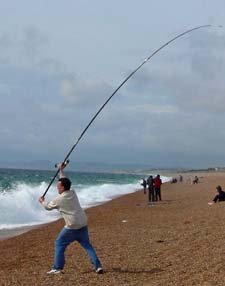
















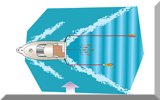

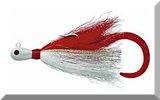
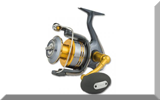
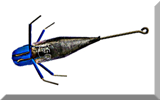
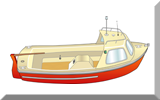
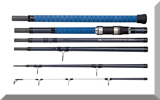
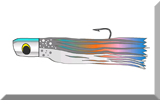
New! Comments
Have your say about what you've just read! Leave me a comment in the box below.